Don’t Overlook the Back Cinch
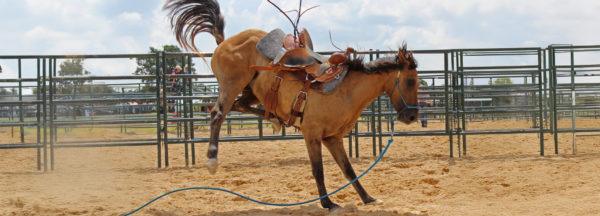
Tacking up your horse correctly isn’t just important for his and your comfort and ability to perform your best—in many cases, it’s vital to your safety.
An often-overlooked piece of properly adjusted equipment is the back cinch on the saddle. The purpose of the back cinch is to help keep your saddle in place. I always ride my horses with one, and I introduce it to all of my horses during the first saddling.
When properly adjusted, the back cinch should be tight enough that it touches the horse, but not so tight that it pulls on his belly. You want it just done up enough so that he can feel it. A lot of people do the back cinch up so loosely that it hangs down from the horse’s belly 3 or 4 inches and leads to dangerous situations. For example, if the horse were to kick at a fly on his belly, he could easily get his hind leg caught in the cinch.
This year’s Colt Starting Clinic provided a great reminder about how important it is to properly adjust the back cinch. When I saddle a horse for the first time, he’s allowed to buck as much and as hard as he wants. He can do whatever he wants to try to get that saddle off his back. I do this because I want him to realize that no matter how hard he bucks, the saddle isn’t going anywhere; it’s staying right on his back.
That’s why, after I saddle a horse in the roundpen and get him comfortable moving at the trot and canter with it, I turn him out in a safe area to move around in. I want a horse to get so comfortable with the saddle that he thinks it’s just another part of his body.
The second time I saddle a horse, and any time after that, he isn’t allowed to buck. If he starts to hump up with the saddle, I immediately redirect his feet and get him moving forward. If you allow a horse to buck every time you saddle him, it’ll quickly become an ingrained habit that’s difficult to break. So the first one’s on me, but after that, bucking is not allowed.
During this year’s Colt Starting Clinic, one of the colts went into a violent bucking fit when the saddle was put on him for the first time. During one of his outbursts, his left back leg came up so far underneath him that it touched his belly. If the back cinch hadn’t been done up properly, his hoof would have gotten caught up in the back cinch. What a wreck that would have been. He would have gotten his leg hung up, and because he was using the reactive side of his brain, he would have fought to get out of the situation. It would have turned dangerous very quickly and would have ruined all of the colt’s confidence about being saddled.
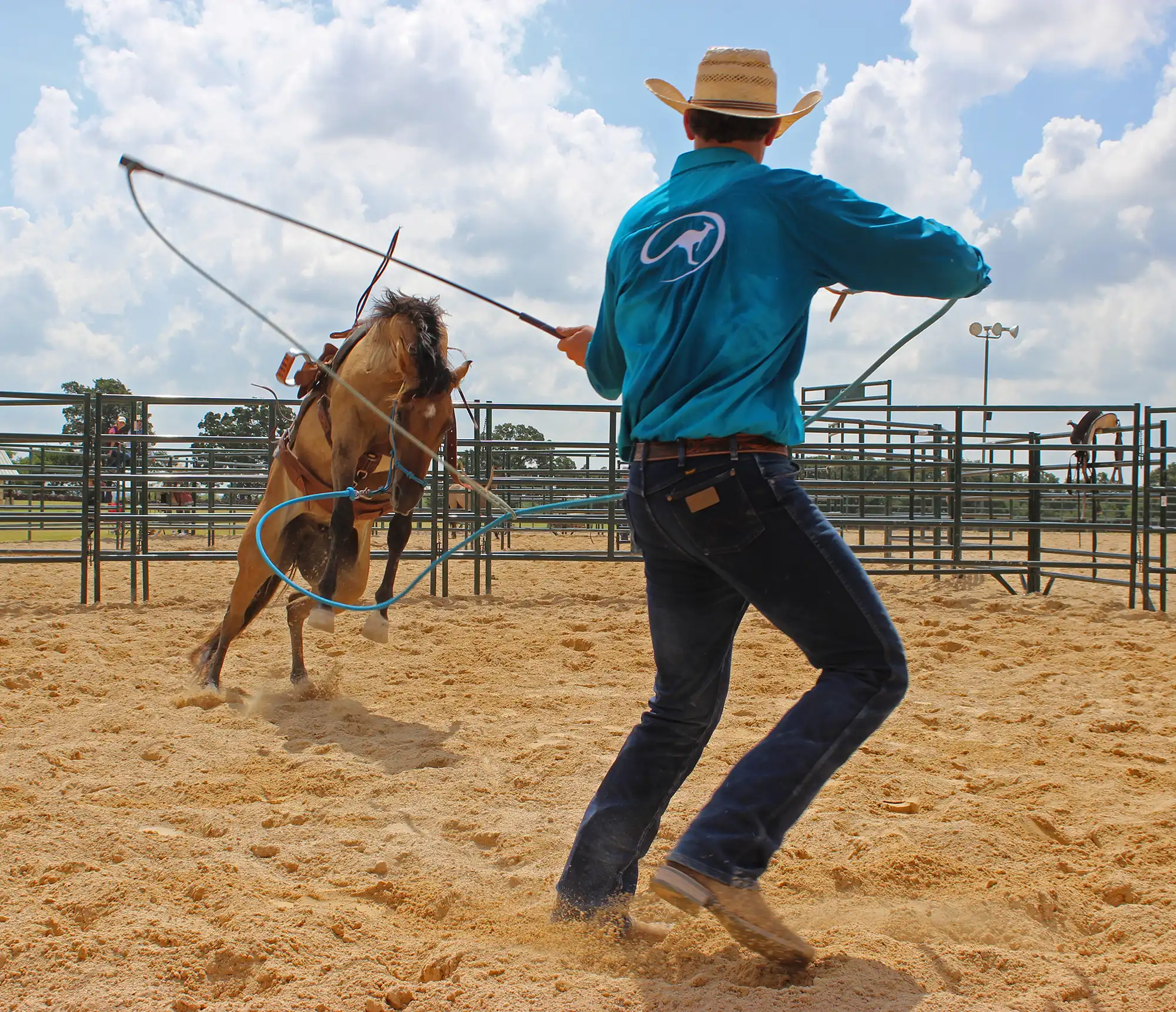
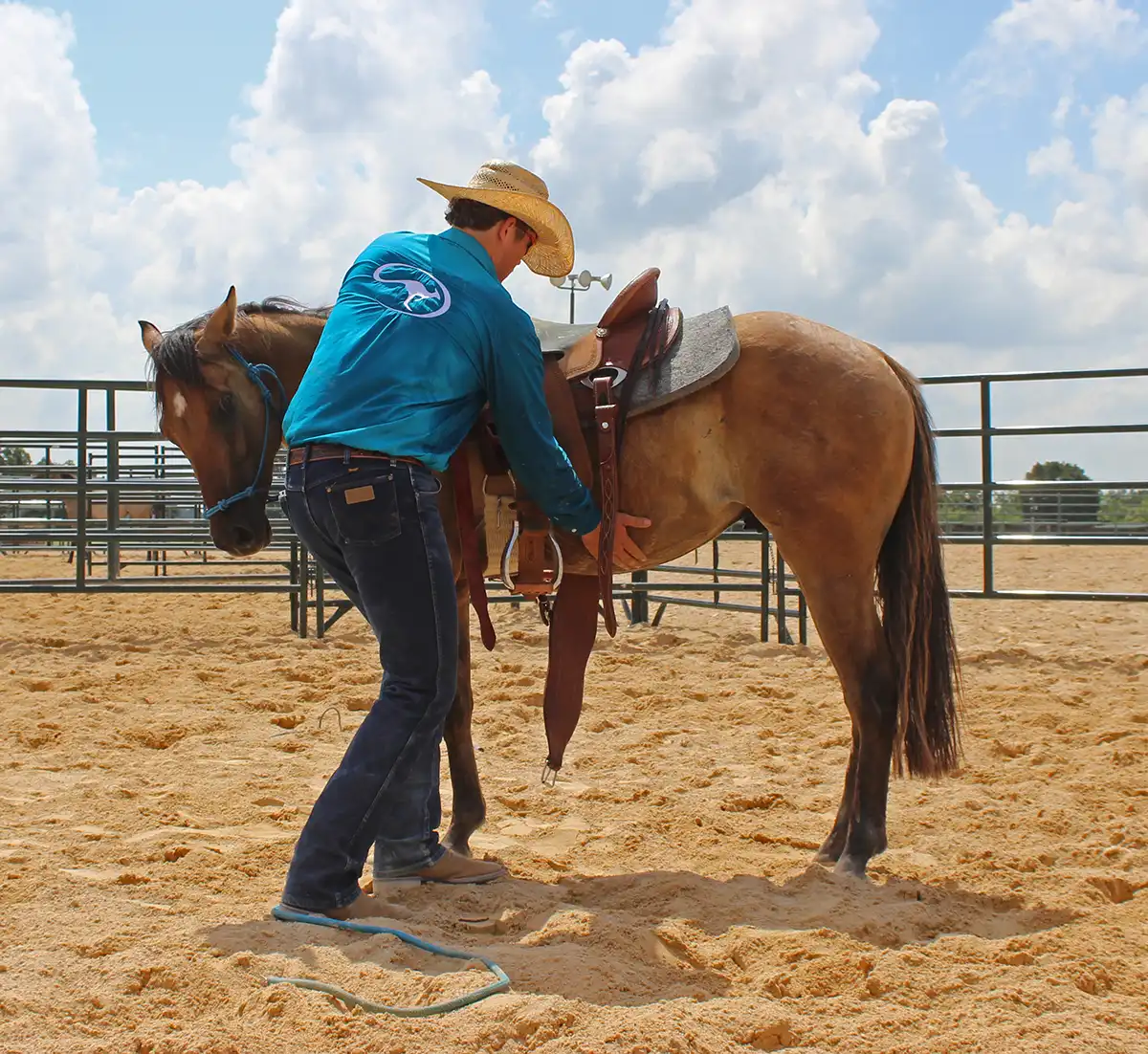
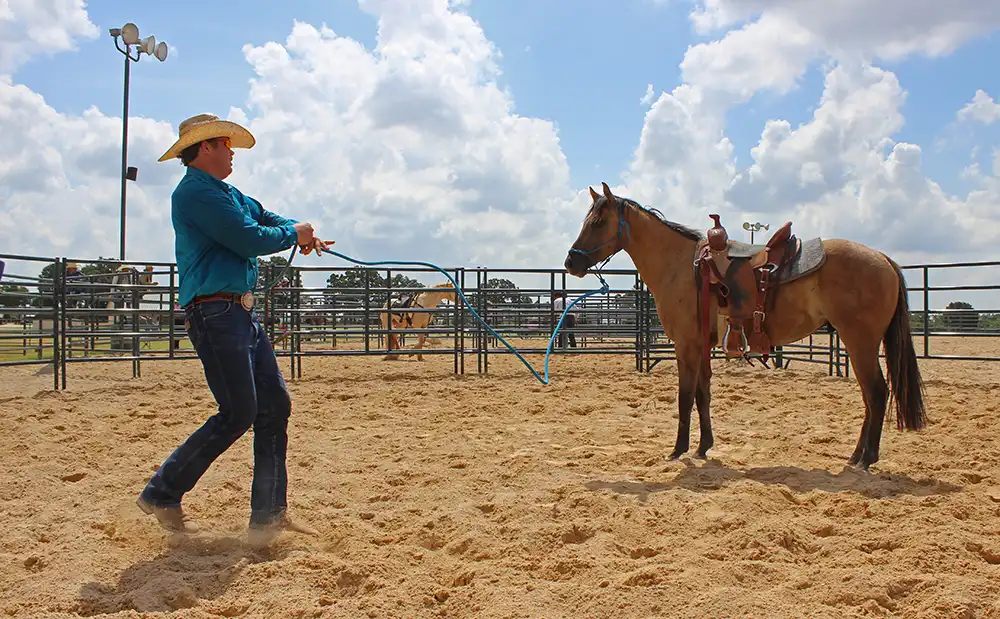
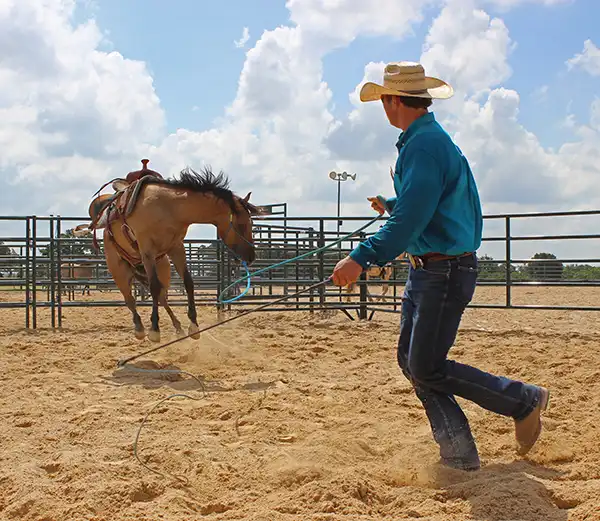
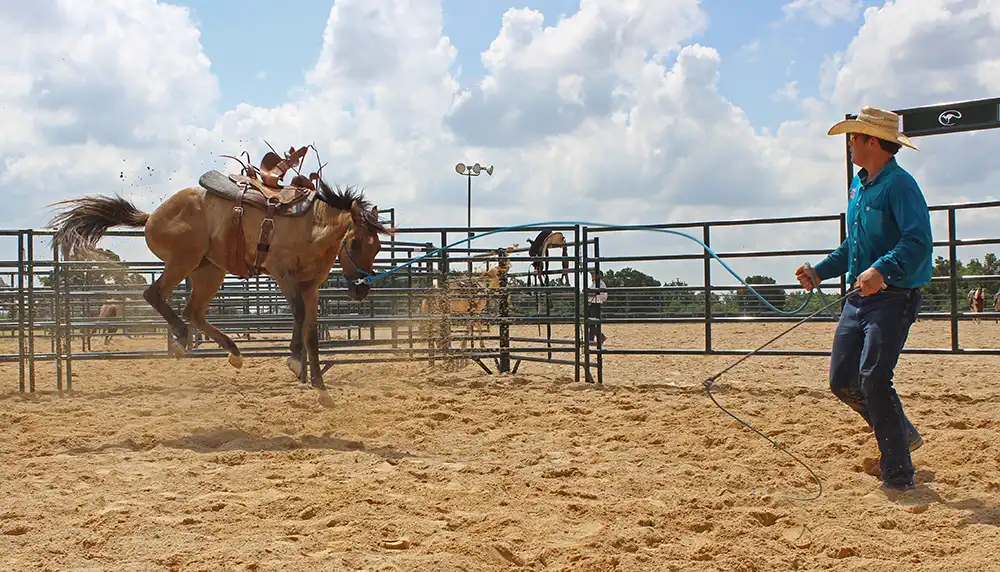
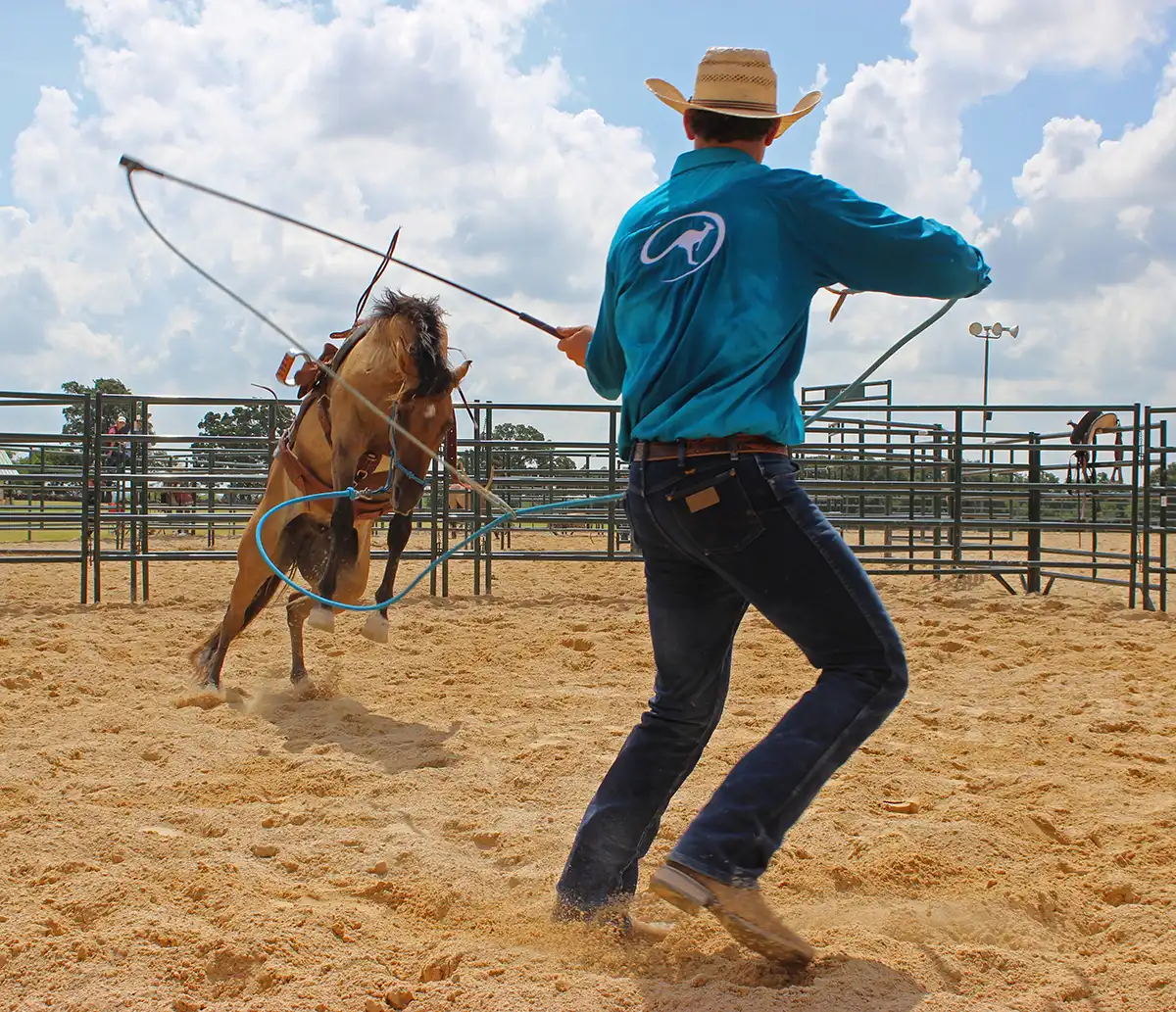
When the Method Ambassador asked the colt to move forward, the colt took one step and then broke into a bucking fit.
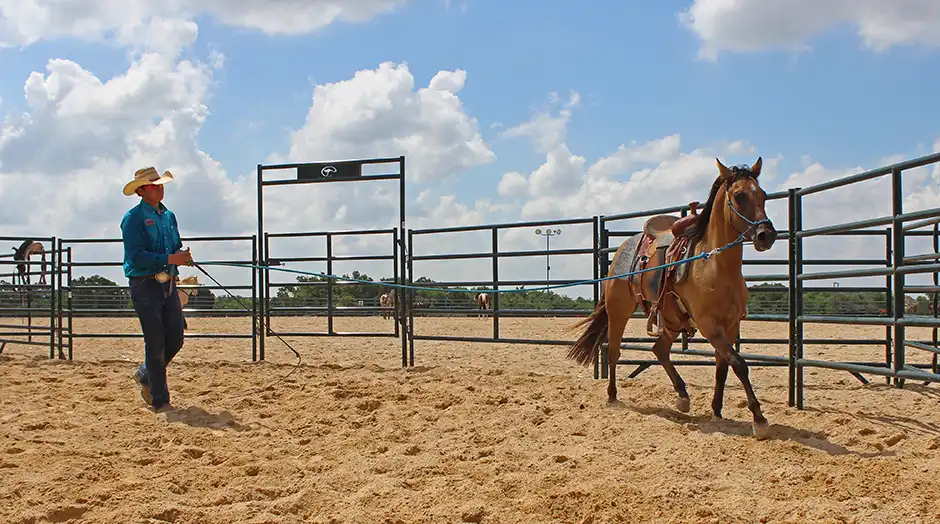
Luckily, the back cinch was done up properly and the experience went smoothly for the colt. After a few rounds of bucking like hell to get the saddle off his back, he relaxed and trotted and loped comfortably around the roundpen. He ended up finishing the clinic as a confident horse with a good, solid foundation on him.
A Word of Caution
If a horse has never worn a back cinch before, let him get used to the feeling of the new piece of equipment by doing plenty of groundwork before you get in the saddle. The first time a horse feels the back cinch touch and move against his sides, he’s likely to be surprised by the feeling and react. It’s far safer for you to handle the situation from the ground and help build his confidence there than it is to be on his back. Be smart and prepare your horse on the ground and get him confident with the back cinch before you get in the saddle.
